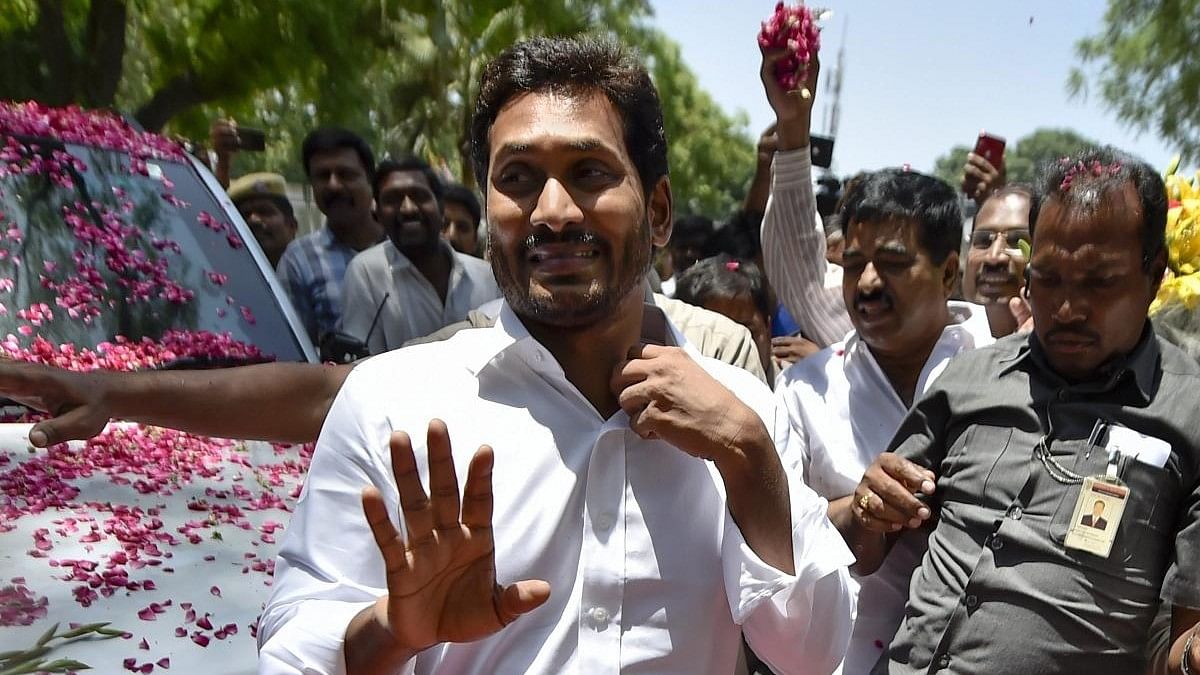
Andhra Pradesh Chief Minister Y S Jaganmohan Reddy.
Credit: PTI File Photo
Hyderabad: The total borrowing of the Andhra Pradesh government and the public sector undertakings both guaranteed and not guaranteed by the state government stands at Rs 6,38,217.85 crore.
Chief Minister YS Jagan Mohan Reddy’s special secretary, Krishna Duvvuri on Tuesday rebutted the claims of the opposition TDP and also some reports that claimed the state's debt stands at Rs 10 lakh crore.
“The outstanding liabilities have increased by 169 per cent during the five year TDP period. This translates to a compounded annual growth rate of the liabilities of 21.87 per cent during 2014-19. As against that, the outstanding liabilities have increased by only 55 per cent during the five year YSRCP rule from 2019-23, translating to a compounded annual growth rate of only 12.07 per cent during the period 2019-23,” said Krishna.
He said that while the total state government liabilities and non-guaranteed PSU liabilities, stood at Rs 4,12,288.04 crore as of May, 2019, by the end of TDP regime it stands at Rs 6,38,217.85 crore as of March 2023 after four years of present government.
He added that when all forms of debt taken are aggregated regardless of whether they are being serviced by the state government or not, increase of liabilities as a percentage to GSDP during the five year period 2014-19 was as high as 7.45 per cent and comparatively during the period 2019-23, the figure is only 5.21 per cent and notably, this is during a period when the Covid-19 pandemic and its aftermath necessitated even the central government enhance the borrowing limits to state governments.
“Therefore, what can be surmised from the above is that, the debt increase during the period of the present government is not higher than what was accumulated during the period of the TDP government, both in terms of absolute numbers as well as in terms of CAGR numbers. The outbreak of the Covid-19 pandemic, has resulted in an estimated revenue loss to the tune of the Rs 66,116 crore, the pandemic related expenditure was significant, important programmes with various crucial sectors were not compromised and further, the quantum of capital expenditure also was not less when compared to the earlier period, in the light of all this, how can one say that the fiscal management is bad?,” he questioned.